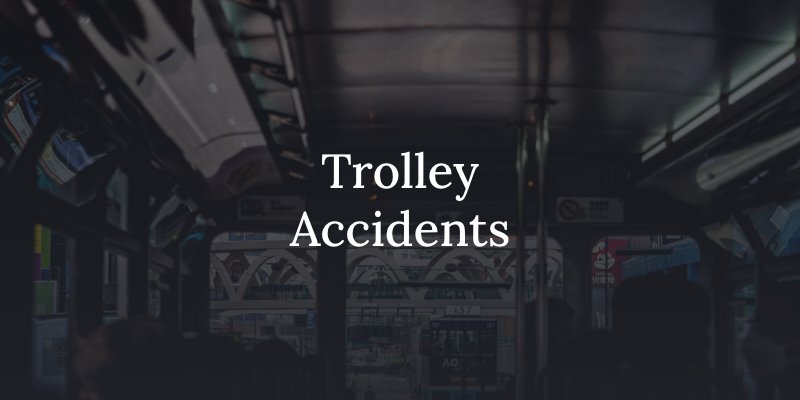St. Louis and several other Missouri towns are well-known for their convenient and picturesque trolley systems, similar to those in San Francisco and the famous streetcars of New Orleans. St. Louis, Hermann, St. Charles, and Lexington are among the historic Missouri cities where riders use trolleys for local transportation within the community, and tourists enjoy a vintage riding experience. Unfortunately, trolleys are not exempt from accidents. Recovery from these types of accidents can be difficult without the help of a qualified injury lawyer. In Missouri, recent trolley crashes include a trolley accident in Hermann that resulted in 32 injuries.

What To Do After a Trolley Accident
Most trolleys do not have seatbelts, leaving riders vulnerable to serious injuries in accidents. After an accident, the scene may be chaotic, with multiple injured passengers and many people attempting to exit all at once. It’s critical to remove yourself from the danger of further injuries if you’re able to move safely. After a trolley accident, do the following:
- First, call 911 if no one else has called, and perform reasonable first aid
- Then, use the phone’s camera to capture images of the damaged trolley and any visible injuries
- Then, add the contact information of the trolley operator and any eyewitnesses to the accident
- Record what you remember about the moments before the accident and what happened during the accident while they are fresh in your mind (trauma can fade the memory later)
Always go to a hospital or urgent care after an accident, including a trolley crash. Either ride in an ambulance if your injuries are serious, or arrange transportation directly from the accident scene. Request a comprehensive medical evaluation and a detailed medical report from your provider. Your medical report and the other evidence you preserved on your phone at the accident scene become essential evidence you can use to recover compensation for your injury damages after a trolley accident.
Injuries In Trolley Accidents
Trolley accidents are commonly caused by operator error, hazardous or broken tracks, faulty mechanics, or insufficient trolley or track maintenance and repairs. Because trolley seats lack seatbelts, are often made of slippery, uncushioned hardwood, and are situated below large windows, sometimes causing severe injuries even when a crash occurs at a relatively low speed. When trolley windows are opened, riders may be ejected from the trolley during a crash. Common injuries in trolley accidents include the following:
- Broken bones
- Traumatic brain injuries
- Soft-tissue injuries like sprains, strains, and tendon or ligament damage
- Neck injuries
- Back injuries
- External head, facial, and dental injuries
- Lacerations, contusions, and abrasions
- Spinal cord injuries
- Internal organ injuries
After a trolley accident, it’s important to keep copies of all medical expenses and injury-related costs, as well as your lost wages during treatment and recovery. If you lost a loved one in a trolley accident, a wrongful death claim can help your family recover compensation.
Who Is Liable for Damages In a Trolley Accident?
Trolley operators and the Public Transit System are responsible for the maintenance, repair, and safe operation of a trolley. Depending on the cause of the accident, the operator or the city transit system may be liable for the damages. Other possible liable parties could include a negligent driver who collided with a trolley, a negligent trolley maintenance company, or the manufacturer of a defective trolley or track part. After suffering injuries in a trolley accident, it’s crucial to hire an attorney with experience in this unique category of personal injury claims. A skilled attorney investigates all aspects of the accident and documents evidence of liability. A compelling case must show that the at-fault party breached their duty of reasonable care, causing your injuries and damages like medical expenses, lost wages, and compensation for pain and suffering.

